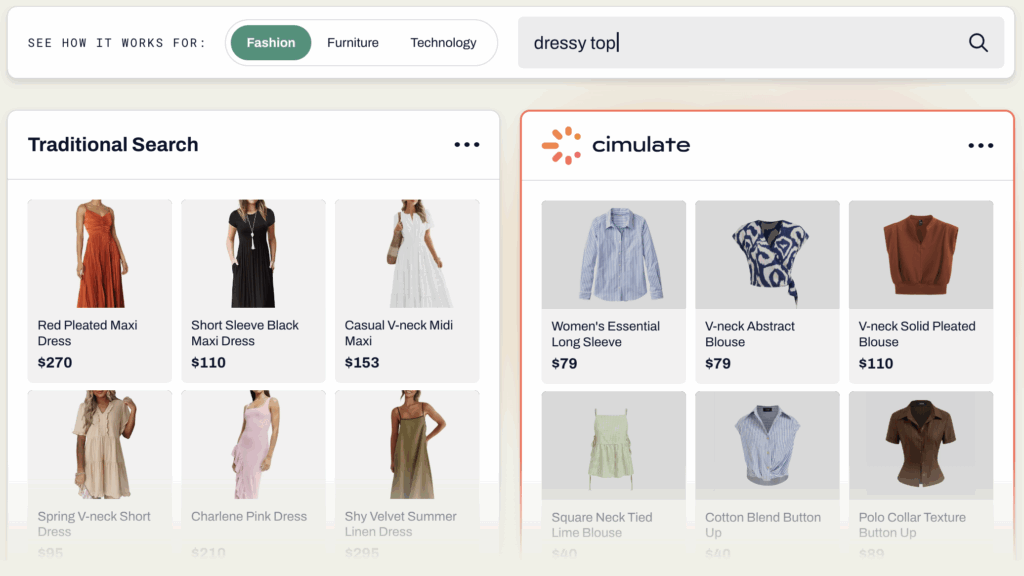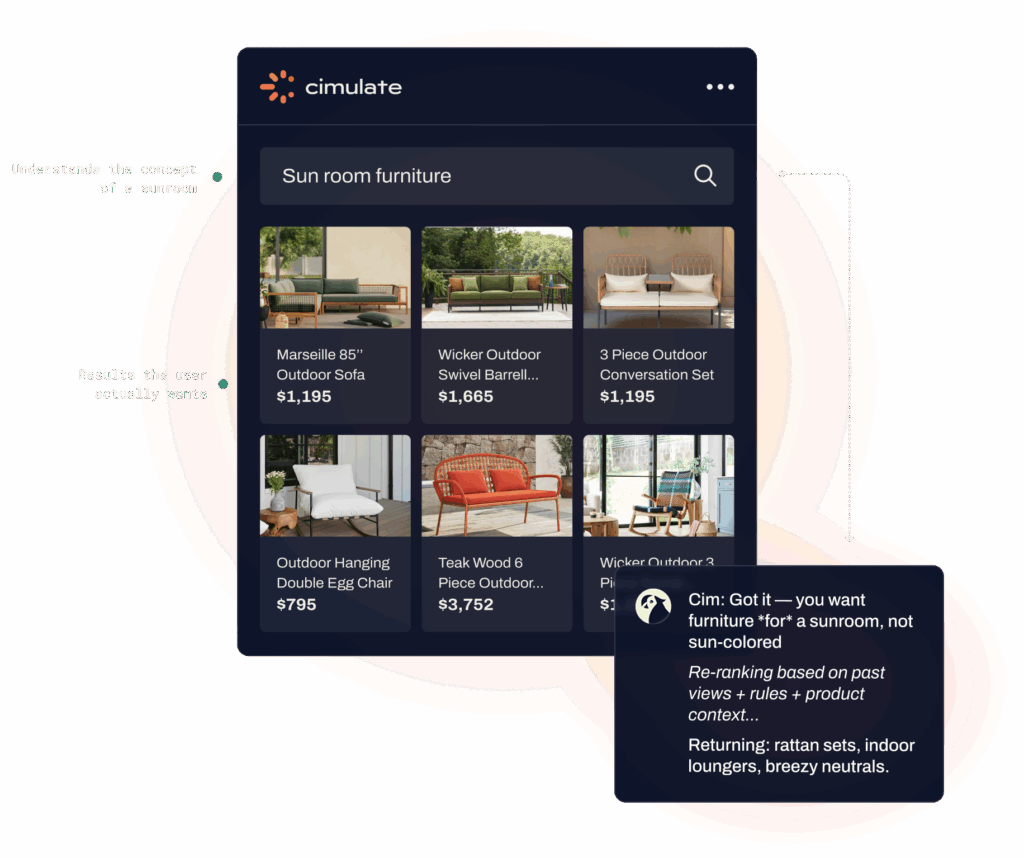What is Site Search?
November 10, 2025

Site search enables visitors to find products on a website by typing queries into a search bar, traditionally powered by keyword matching. The next generation of site search and product discovery will allow shoppers to search with conversational, intent-based queries.
What is Site Search?
Site search is a website functionality that enables visitors to search for content, products, or information on a specific site. Different than a search engine, like Google, site search is contained to one site and designed with specific users in mind to give them the most relevant results.
Traditional site search enables website visitors to enter keywords into a search bar, eliminating the need to manually browse through different categories.
However, the increasing popularity of using AI-powered discovery engines for product recommendations means that consumers are preferring longer, conversational searches as opposed to keyword searches. Strong site search will go beyond simple keyword matching and understanding context, intent, and longer language queries to deliver the best results for shoppers and seamless product discovery experiences.

Why Is It Important?
It is not only important for a shopper’s convenience, so they can search for exactly what they want, but also as a conversion driver. Strong search and discovery experiences:
- Enhances the consumer experience: Customers find and discover products faster than manually filtering and searching
- Increases engagement: Relevant search results keep shoppers on your site longer
- Boosts conversions: Shoppers who use search often know exactly what they want, making them valuable site traffic. Great site search empowers them with the right products and guided discovery journeys, increasing click-to-cart.
How Does Site Search Work?
Basic site search has three steps:
- Input: A shopper enters a query into the search box.
- Processing: The search engine interprets the query and matches it against the product catalog.
- Output: Search results show the product matches and discovery recommendations.
Traditional search relies on keyword matching. This means that the search engine will look for products that contain the exact words the consumer is using in the search bar. A retailer’s product catalog contains titles, descriptions, categories, and tags to show results to a search engine. Once the system finds all products matching a search, it will also rank the results based on relevance.
Product metadata and tagging are essential not only for accurate search results but also for product discovery experiences like related product suggestions and “you may also like” recommendations. This requires a lot of manual effort from your teams to ensure that “burgundy evening gown” will generate results, instead of none if products are only tagged as “red dress.”
AI Site Search vs Keyword Search
While keyword matching works for simple queries, it fails to understand the context and intent behind a shopper’s search. This leads to irrelevant results, frustrated shoppers, and lost revenue.
Shoppers are evolving their product research to AI engines, instead of traditional search, and retail sites need to evolve with them. AI powered search and discovery provided personalized recommendations that highly influence purchase decisions.
Digital Commerce 360 reports that personalization at scale is an expectation in both B2B and B2C markets. AI-powered search moves beyond just keywords and understands context, intent, and personalization. Because of this, it delivers more value to both the shopper and the retailer:
- Understands natural language: AI search doesn’t need exact keywords. It can interpret conversational queries.
- Recognizes synonyms: Customers won’t miss products because their wording doesn’t match tagged keywords. AI recognizes that “dress” and “gown are related.
- Boosts conversion: Shoppers find exactly what they want, faster. This keeps them engaged, on the website, and more likely to make a purchase.
How Cimulate Delivers the Next Generation of Site Search
Search has long been a pain point for retailers, which made it a great problem for our co-founders to solve.
Cimulate’s AI-native shopping experience understands shoppers the way they naturally browse, search, and discover new products. The gap between what shoppers want and what traditional search delivers is exactly what Cimulate was built to solve:
- We built the first CommerceGPT: An LLM-based operating system that is built to understand intent and drive conversions.
- We solve a data disadvantage: We create personas that simulate shopper journeys and turn that into synthetic data that understands intent. This closes the data gap between you and retail giants.
- We are built to scale: Cimulate performs in high-traffic environments at low cost, allowing customers to leverage AI and LLMs without the cost.

With Cimulate, search becomes more than a navigation tool. It becomes a conversion engine:
- Boost revenue by converting high-intent searchers into buyers.
- Reduce friction with fewer irrelevant results and zero results pages, improving product findability
- Save time and resources by eliminating the need for extensive manual tagging.
- Unlock insights into customer language and preferences to inform merchandising and marketing strategies.
Shoppers today expect seamless, intelligent search. Cimulate makes it possible by transforming site search into a personalized, high-converting experience that keeps customers engaged and coming back.